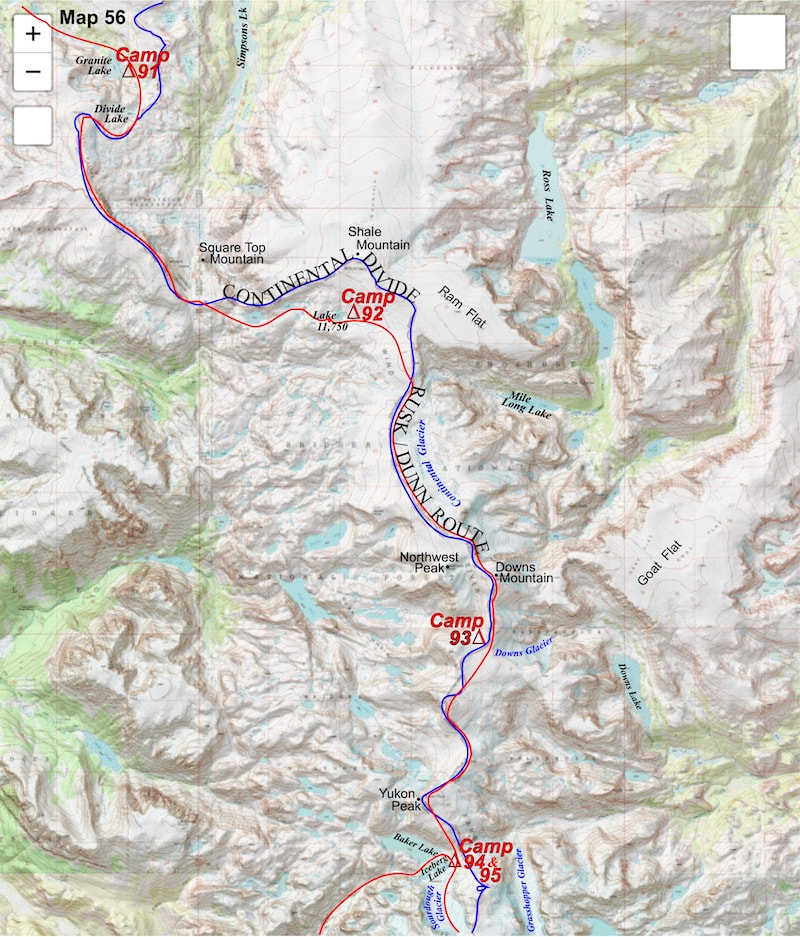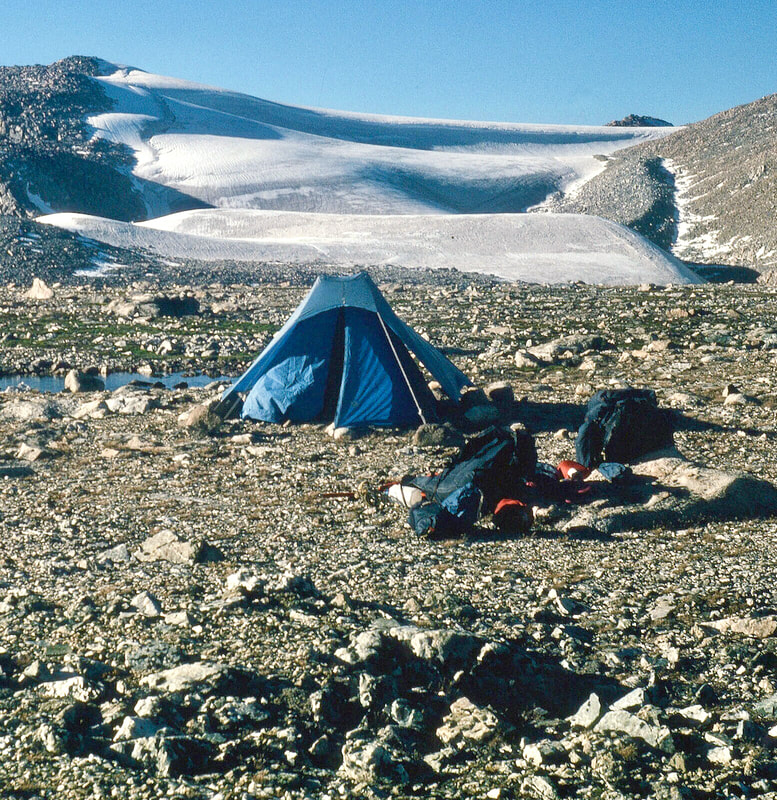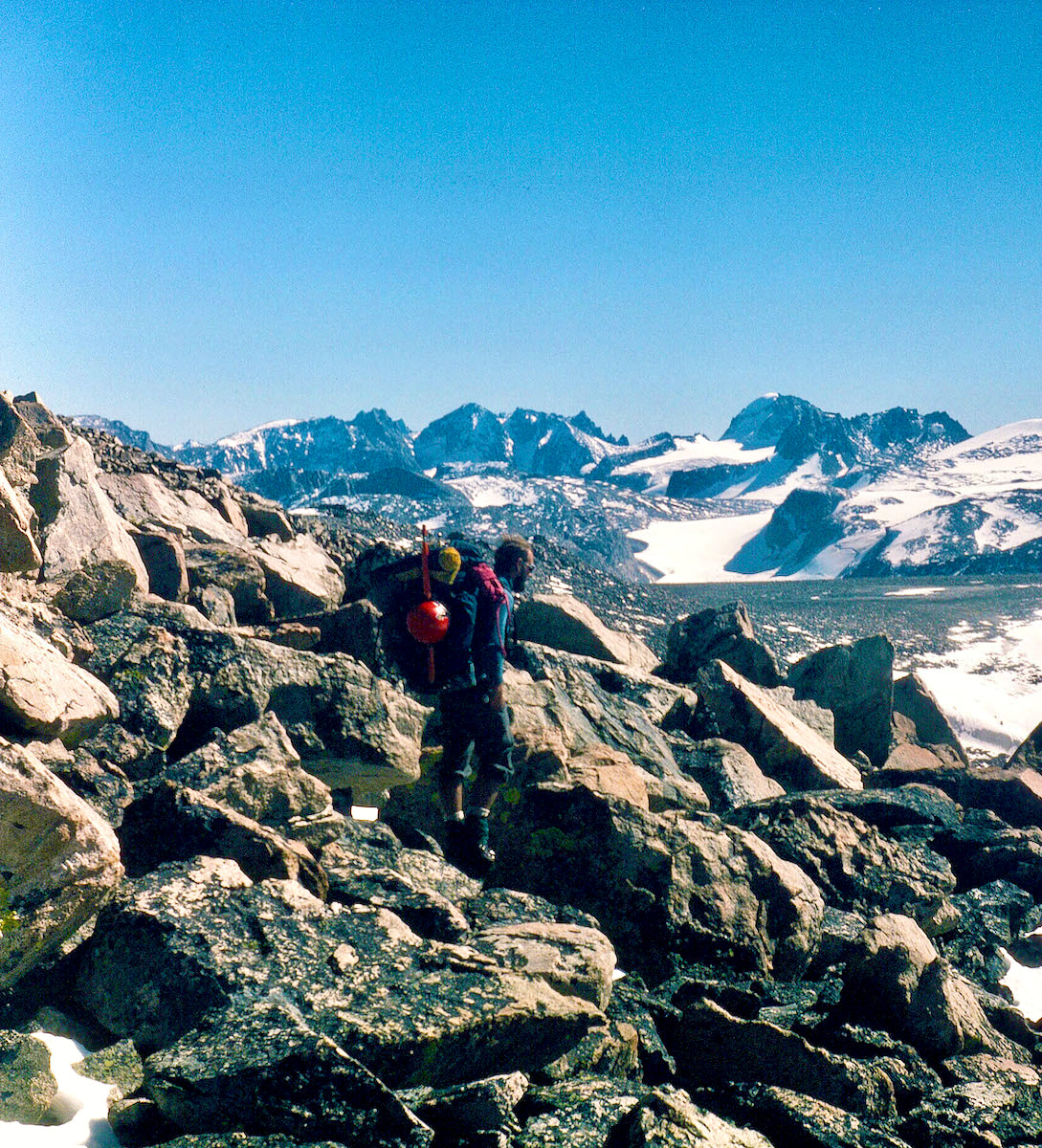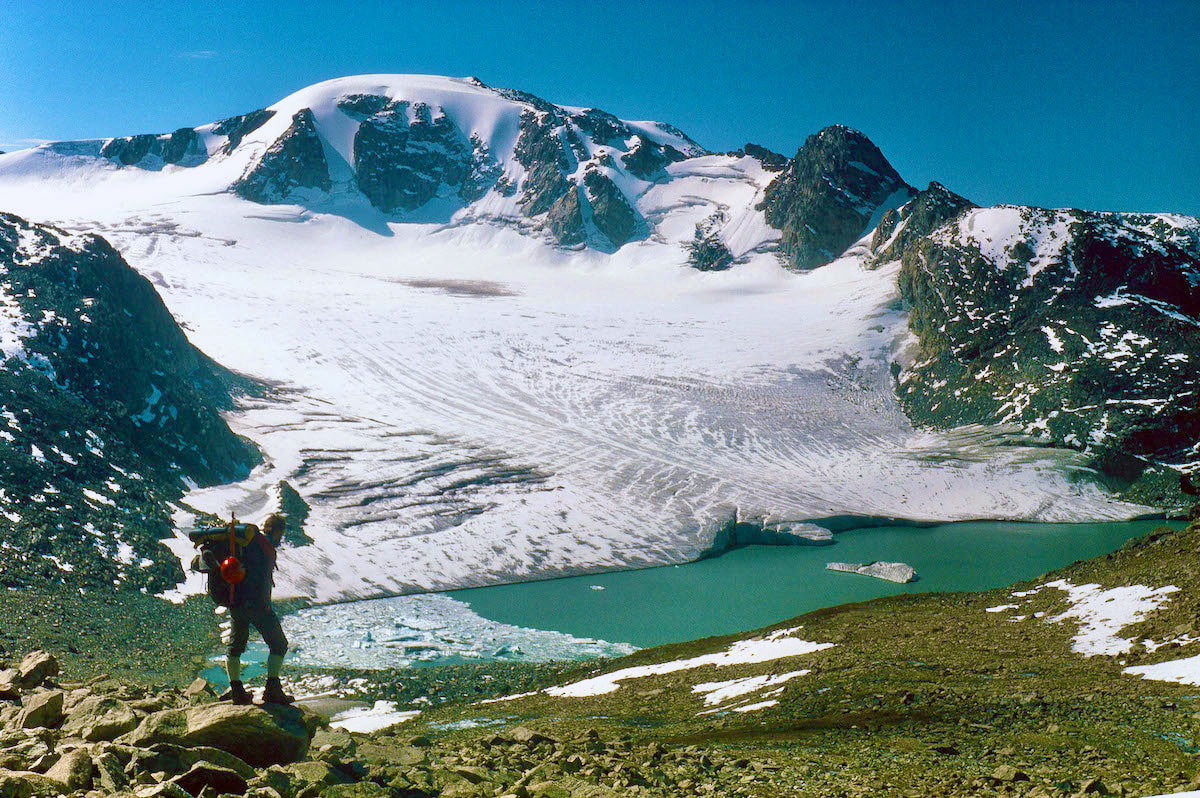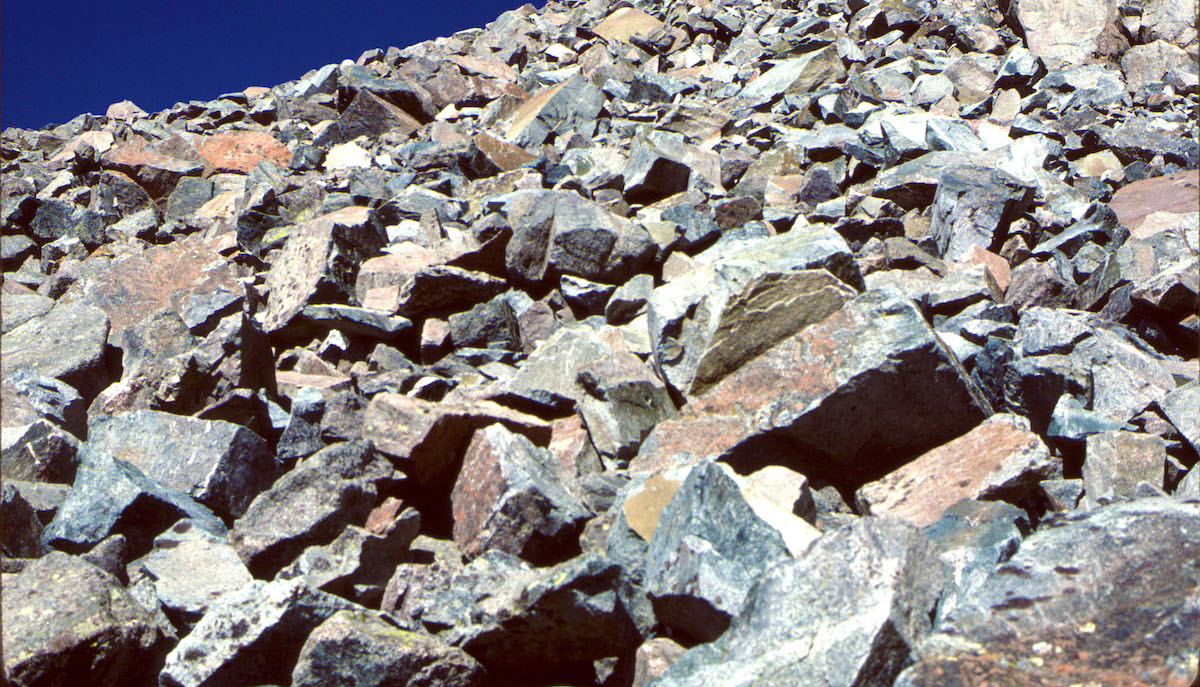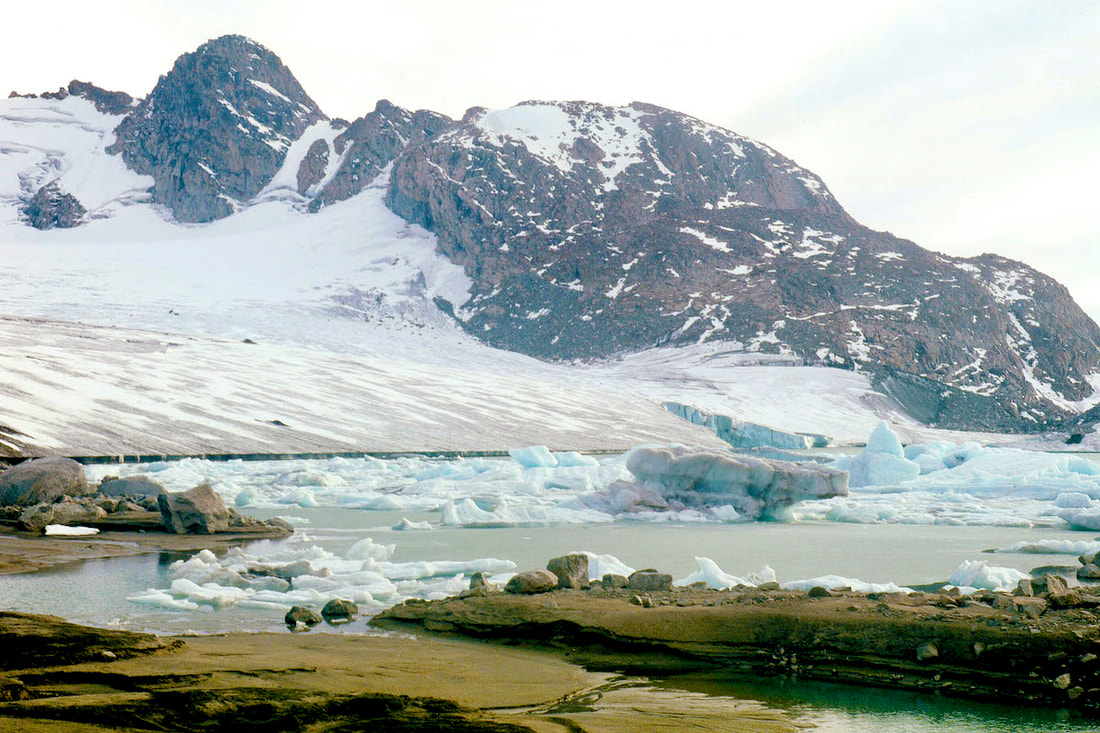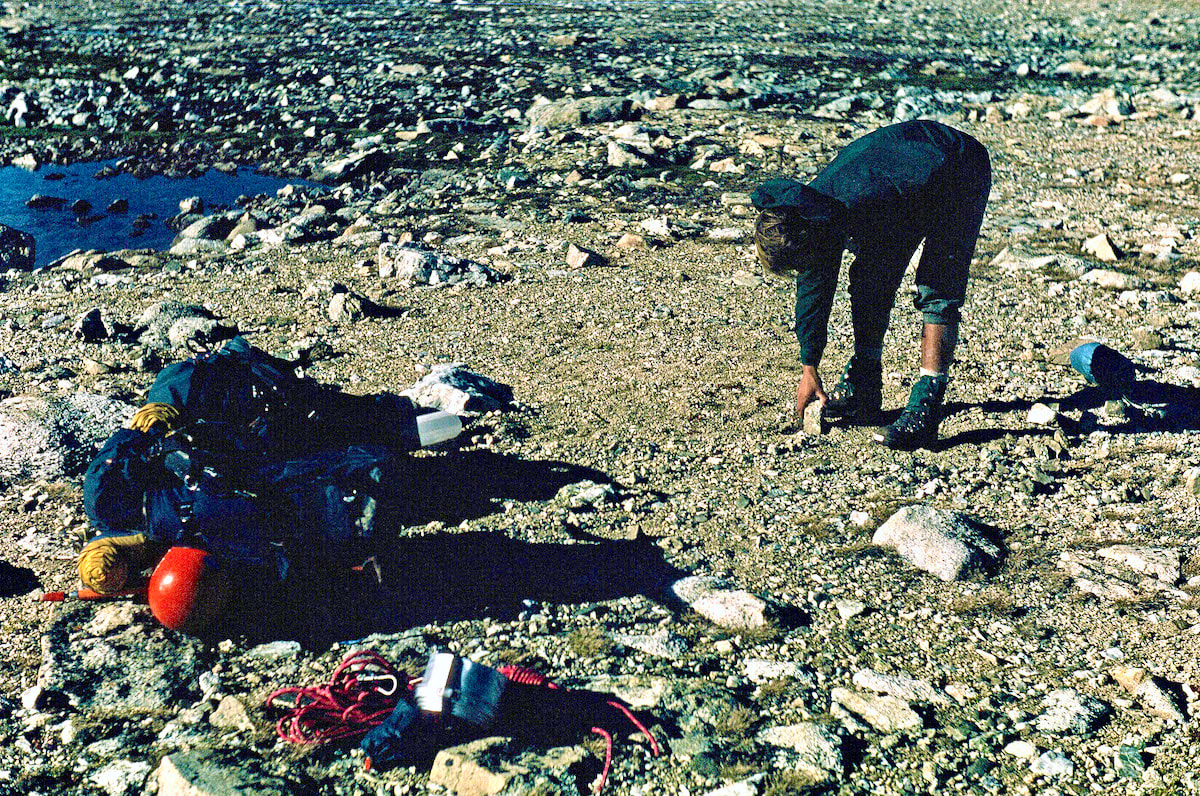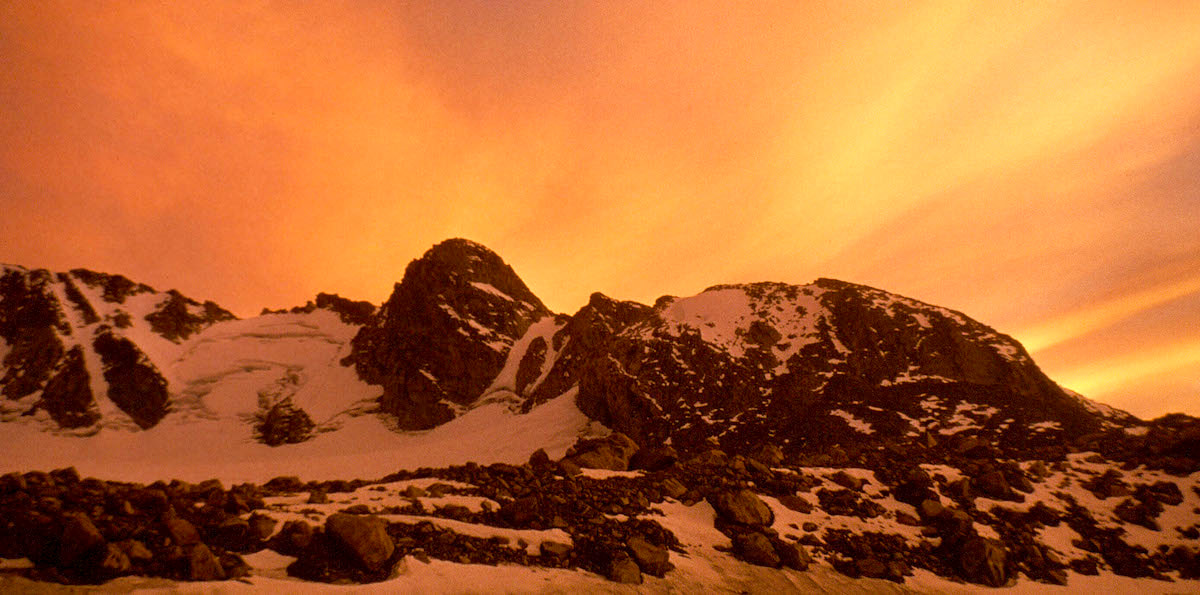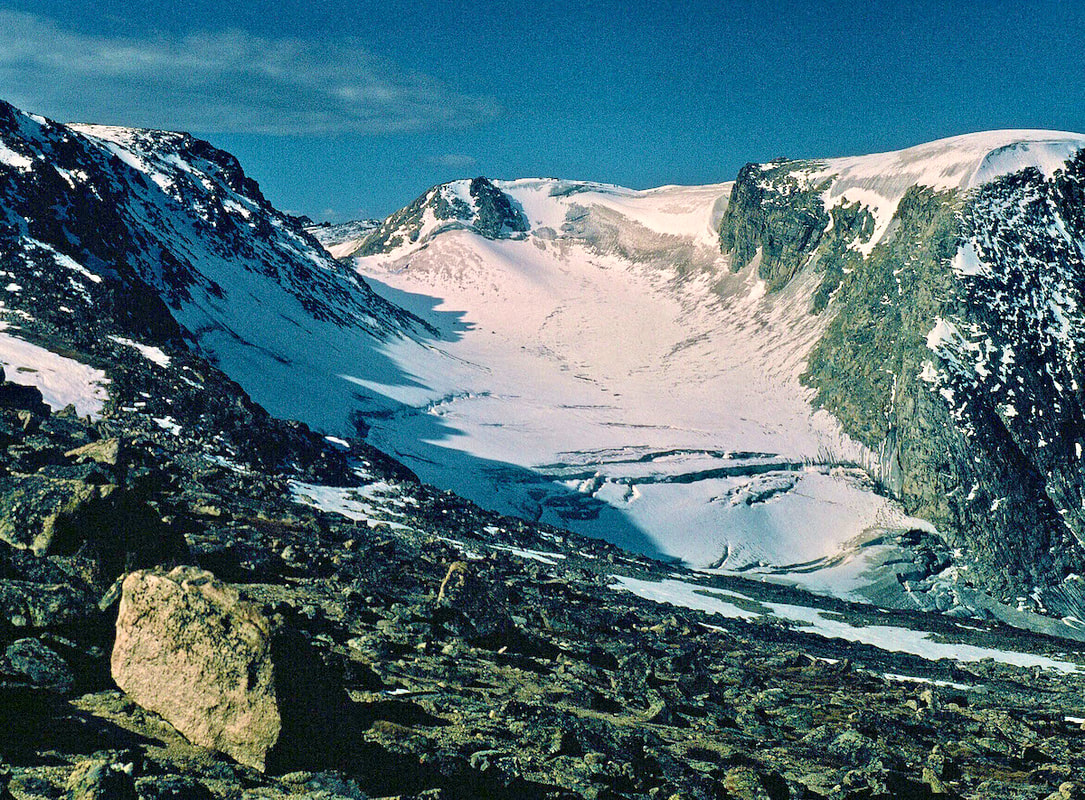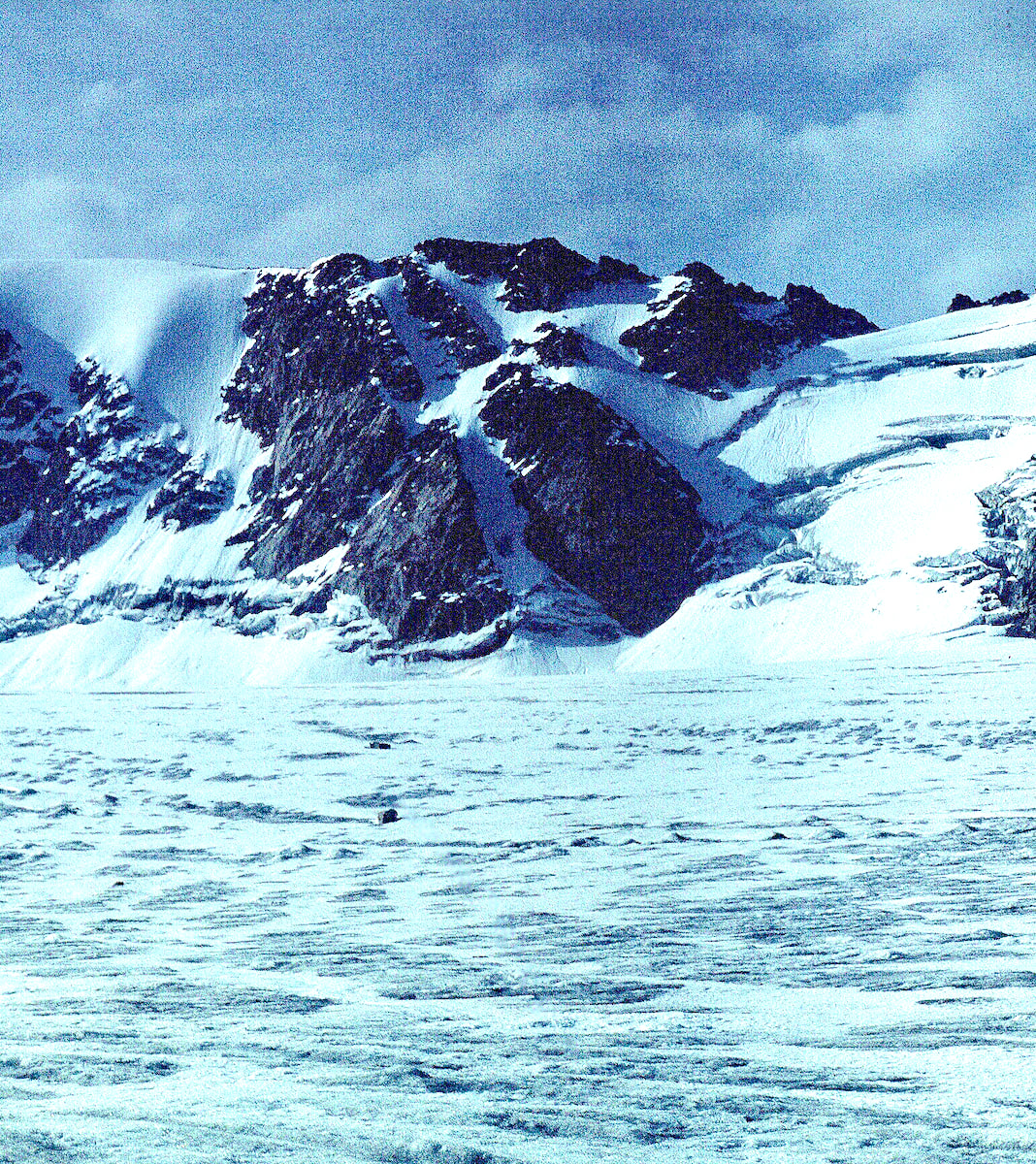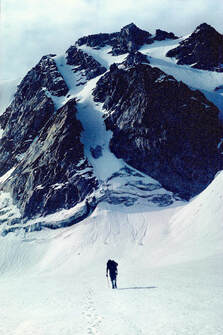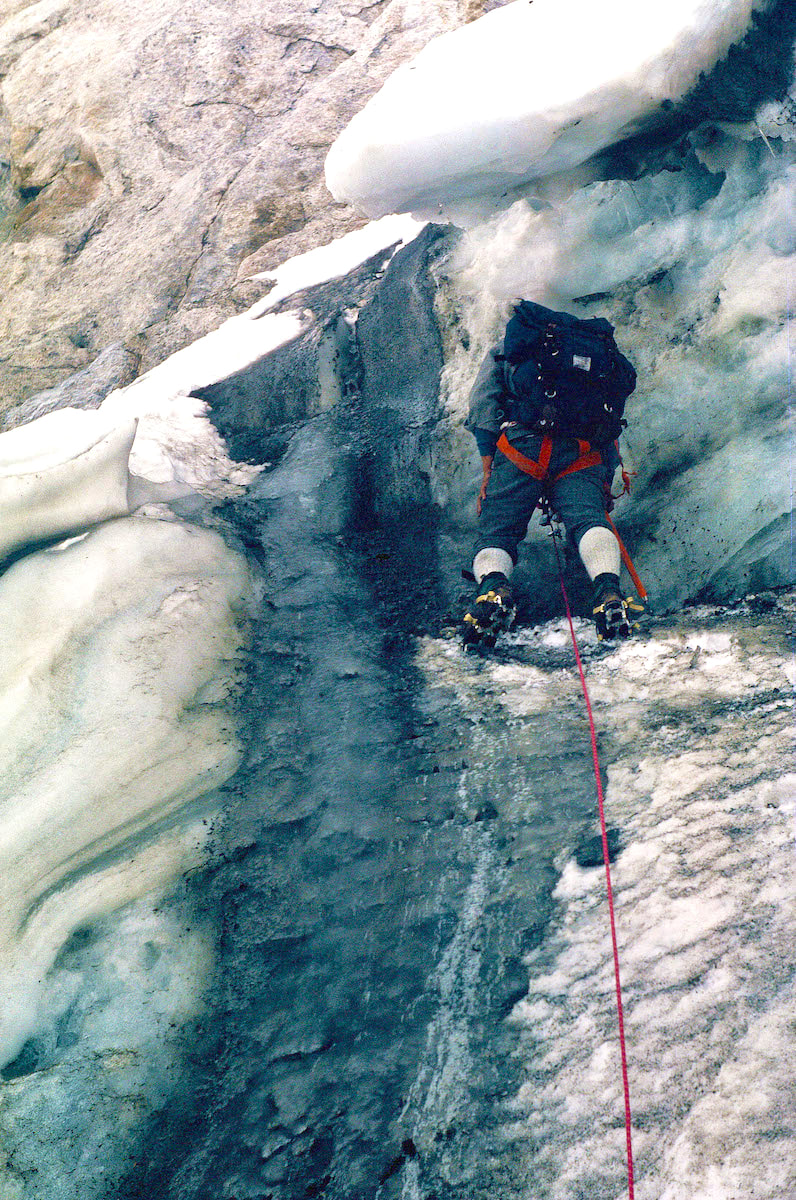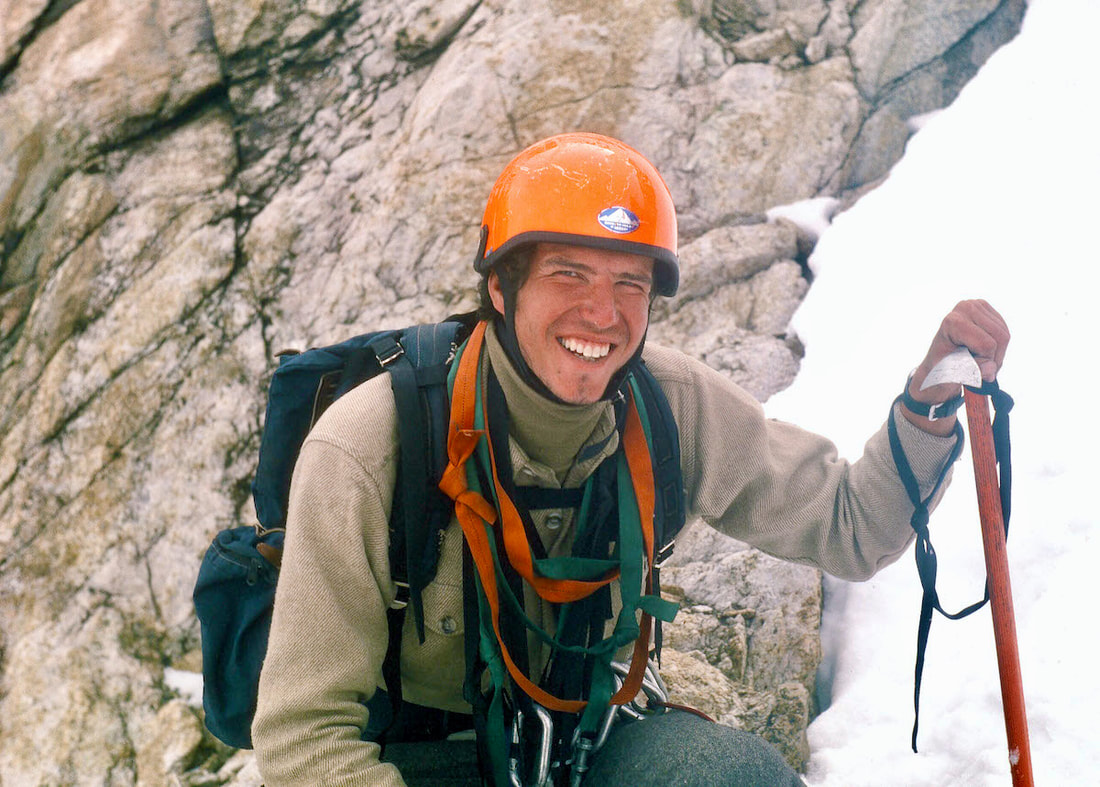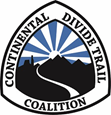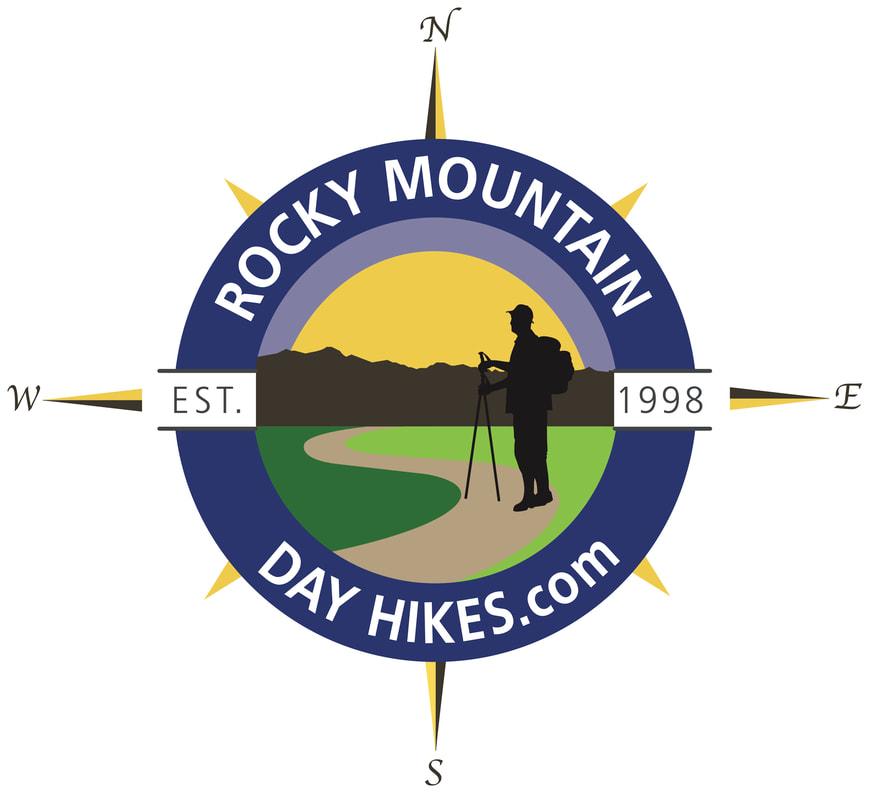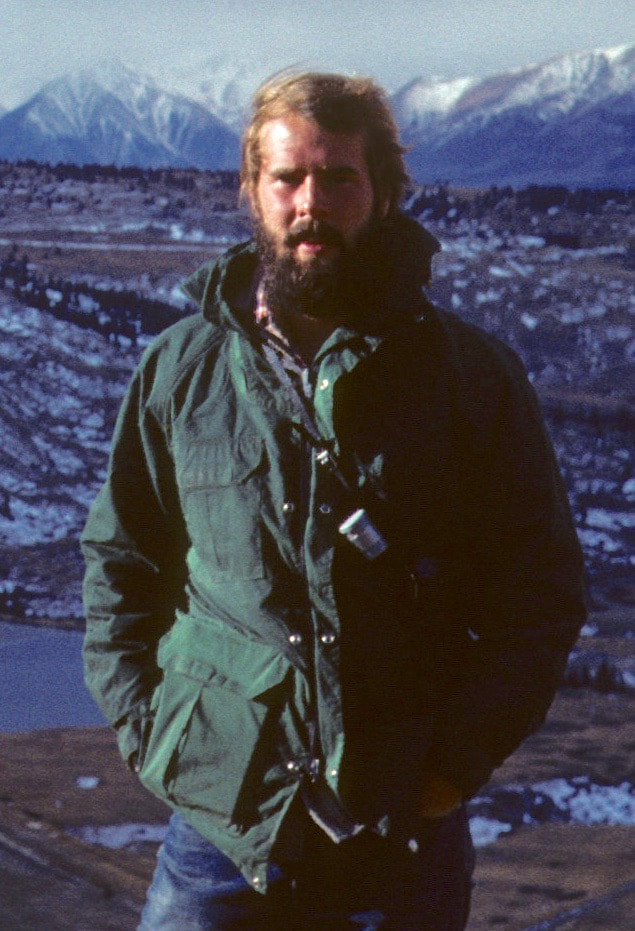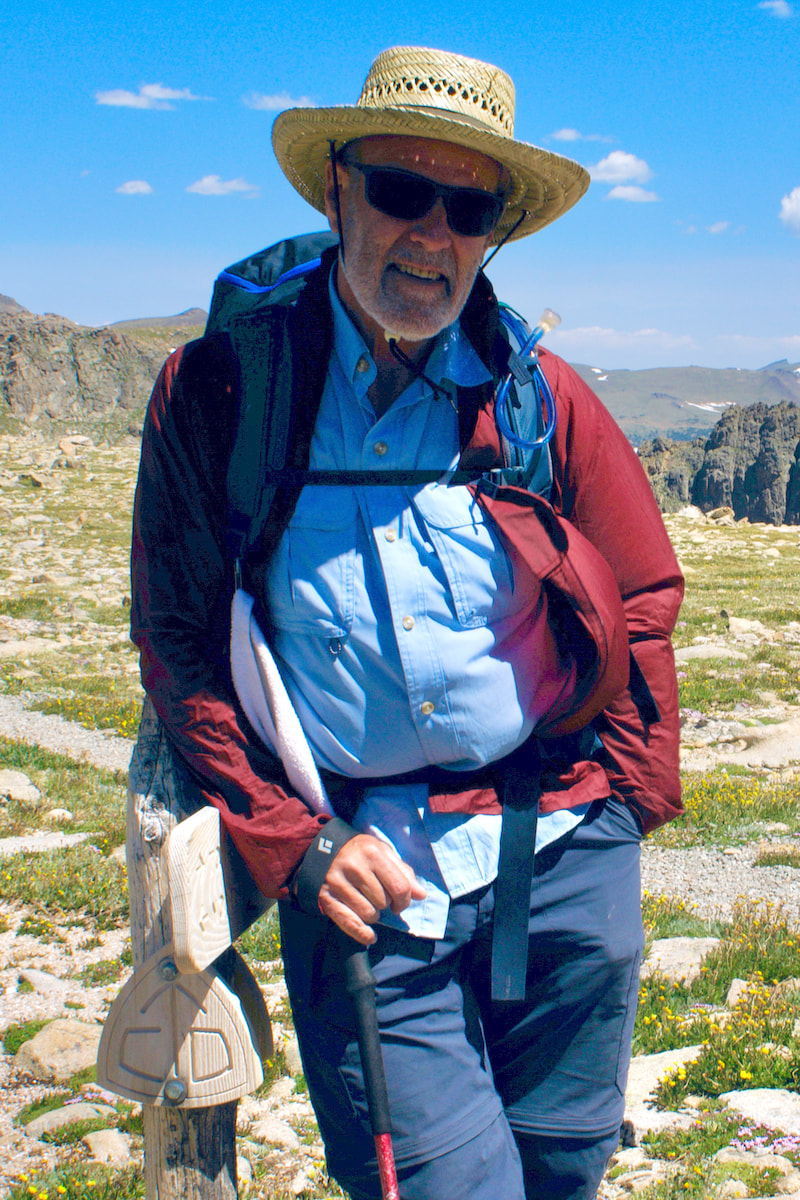The Continental
|
rocky terrain to start until we were able to find linking stretches of tundra between the rocks and boulders.
on the ground; up and through more steep, boulders leading along the ridge to the peak.
It took us a couple of hours to climb the north ridge and traverse over to the south side. By the time we reached the descent, we were both fatigued and, while trying to put a mask over it, Craig looked pained.
Descending through these boulders was like coming down a jumbled-up set of stairs with the treads anywhere from two to four feet apart, sloped and cocked at all kinds of crazy angles, causing an awkward jolt to the legs and joints with each step. As I watched Craig descend the boulderfield, working hard to catch-up to me, he certainly looked wobbly and his knee joints, even from a distance, looked like they were about to dislocate at times. section of boulders then managed to find some swaths of tundra that helped get us the rest of the way to the lake.
The late afternoon sun was warm and the wind had mostly died out to where it was pleasant to sit on the rocks by the lake, and that’s just what we did, in awe of the scenery for quite some time before finally scouting out a tent site.
After that whole project was done, we set-up the cook gear and started water for soup, munching on lunch food that we hadn’t got around to eating while up in Yukon’s boulderfields. The tinned chicken with instant rice, smothered in lots of margarine and seasoned salt, tasted almost gourmet in this setting. Then, while brewing hot drinks after supper, we watched the clouds behind Klondike Peak turn a brilliant, glowing orange as the sun slowly melted away, making for a cinematic sunset. After which, and with no delay, the temperature turned frigid and we retreated to our warm, down sleeping bags to read and write. September 5 Per our planning from a year ago, today was a scheduled rest day, and boy, did we pick a gem of a place for that! I slept like the rocks I was sleeping on and in the morning I awoke to pristine silence. Not a sound, no wind, and a glance out the tent window revealed a deep, blue sky. ‘Yes!!’ I rolled over and went back to sleep. We dozed until the sun had warmed the inside of the tent to a comfortable, t-shirt temperature then put on our warm clothes and ventured out into the sparkling, crystalline morning. We were carrying dried pancake mix and brown sugar for rest days, so we proceeded to fix and feed on pancakes topped with squeezed margarine and brown sugar until our stomachs demanded a stop to that shit.
couloir running straight from the glacier to the summit, and it was just begging for someone to come over there and climb it.
Craig hadn’t considered going for a climb until I mentioned it, and then it must have gotten him to thinking because about ten minutes later he said “Okay, sure, let’s go climb that couloir”, suddenly stoked to go adventuring.
In the narrow crevice of the couloir we had been unable to see the storm bearing down on us from the west and that crack of lightning alerted us to dark, threatening clouds moving-in overhead. Then another blinding flash, followed so closely by thunder that the lightening had to be almost on top of us, put us into panic mode. Holyshit was right, we were incredibly exposed at the top of the couloir, and with metal crampons strapped to our feet, metal ice axes in hand and metal climbing gear slung around our necks, we were suddenly nothing more than mobile lightning-rods. Over the top and, hopefully, down to some sort of rock shelter on the other side was our best shot at ‘safety’, putting us in a race to the summit against a lightning storm. Go to Part 49
0 Comments
Leave a Reply. |
Kip RuskIn 1977, Kip Rusk walked a route along the Continental Divide from Canada to Mexico. His nine month journey is one of the first, documented traverses of the US Continental Divide. Montana Part 1 - Glacier Ntl Pk Part 2 - May 11 Part 3 - May 15 Part 4 - May 19 Part 5 - May 21 Part 6 - May 24 Part 7 - May 26 Part 8 - June 2 Part 9 - June 5 Part 10 - June 7 Part 11 - June 8 Part 12 - June 11 Part 13 - June 12 Part 14 - June 15 Part 15 - June 19 Part 16 - June 23 Part 17 - June 25 Part 18 - June 27 Part 19 - June 30 Part 20 - July 5-6 Part 21 - July 7-8 Part 22 - July 9-10 Part 23 - July 11-15 Part 24 - July 17-18 Part 25 - July 18-19 Part 26 - July 19 Part 27 - July 20-21 Part 28 - July 22-23 Part 29 - July 24-26 Part 30 - July 26-30 Part 31 - July 31-Aug 1 Part 32 - Aug 1-4 Part 33 - Aug 4-6 Part 34 - Aug 6 Part 35 - Aug 7-9 Part 36 - Aug 9-10 Part 37 - Aug 10-13 Wyoming Part 38 - Aug 14 Part 39 - Aug 15-16 Part 40 - Aug 16-18 Part 41 - Aug 19-21 Part 42 - Aug 20-22 Part 43 - Aug 23-25 Part 44 - Aug 26-28 Part 45 - Aug 28-29 Part 46 - Aug 29-31 Part 47 - Sept 1-3 Part 48 - Sept 4-5 Part 49 - Sept 5-6 Part 50 - Sept 6-7 Part 51 - Sept 8-10 Part 52 - Sept 11-13 Part 53 - Sept 13-16 Part 54 - Sept 17-19 Part 55 --Sept 19-21 Part 56 Sept 21-23 Part 57 - Sept 23-25 Part 58 - Sept 26-26 Colorado Part 59 - Sept 26 Part 60 - Sept 30-Oct 3 Part 61 - Oct 3 Part 62 - Oct 4-6 Part 63 - Oct 6-7 Part 64 - Oct 8-10 Part 65 - Oct 10-12 Part 66 - Oct 11-13 Part 67 - Oct 13-15 Part 68 - Oct 15-19 Part 69 - Oct 21-23 Part 70 - Oct 23-28 Part 71 - Oct 27-Nov 3 Part 72 - Nov 3-5 Part 73 - Nov 6-8 Part 74 - Nov 9-17 Part 75 - Nov 19-20 Part 76 - Nov 21-26 Part 77 - Nov 26-30 Part 78 - Dec 1-3 New Mexico Part 79 - Dec 3-7 Part 80 - Dec 8-11 Part 81 - Dec 12-14 Part 82 - Dec 14-22 Part 83 - Dec 23-28 Part 84 - Dec 28-31 Part 85 - Dec 31-Jan2 Part 86 - Jan 2-6 Part 87 - Jan 6-12 Part 88 - Jan 12-13 Part 89 - Jan 13-16 Part 90 - Jan 16-17 Part 91 - Jan 17 End |
© Copyright 2025 Barefoot Publications, All Rights Reserved

